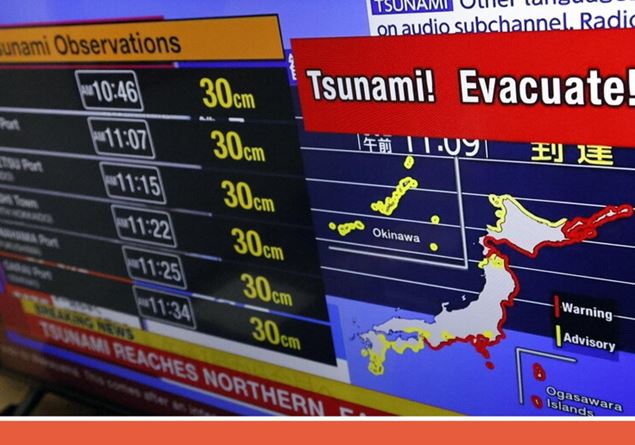A very powerful earthquake shook the seabed of the northern ocean in the night. Shortly after 1st Italian night, an earthquake of magnitude 8.8 was recorded off the peninsula of Kamchatkain eastern Russia. The shock, among the most violent ever measured by modern seismology – The sixth for intensity since the early twentieth century – He immediately triggered the tsunami alert in dozens of countries overlooking the Pacific, from Japan to the United States, from the Philippines to Latin America.
The fear of a devastating anomalous wave, like the one that hit Japan in 2011 causing over 18 thousand deaths, pushed local and international authorities a have large -scale precautionary evacuationsespecially in Russia, Japan And Hawaii. Luckily, There are currently no victims or serious damagebut prudence remains very high: the Pacific Tsunami alert center (PTWC) warns that new waves or Establishment shocksthey could occur in the next few days.
The epicenter and the shock
According to the preliminary data of the United States Geological Service (USGS), the earthquake had Epicenter about 120 km from Petropavlovsk-Kamchatskycapital of the Kamchatka peninsula, and a depth of about 21 kilometers. The area, geologically unstable because it is located along the so -called “Fire ring” of the Pacific, is known for its seismic activity, but an event of this magnitude is extremely rare.
To have a term of comparison, the earthquake that in 2004 caused the devastating tsunami in Indonesia – with over 230,000 deaths – had magnitude 9.1. Today’s earthquake, with 8.8, frees an energy comparable to hundreds of atomic bombs.
Waves of tsunami and evacuations
The earthquake generated a tsumer of great amplitude. The first waves reached the Russian eastern coast within a few minutes: a Severo-Kurilskon the curili islands, have been measured waves up to 5 meters highwho invaded part of the port and damaged some infrastructures, without however causing serious injuries.
Maximum alert also in Japanwhere beyond 2 million people They were invited to leave the houses along the eastern coasts, in particular in the prefectures of Hokkaido, Aomori and Miyagi. The waves have reached the 130 centimetersIn some areas, and the Japanese meteorological agency ordered The evacuation of the area around the Fukushima nuclear power plantwhich for now does not show anomalies.
On the other side of the Pacific, in United Statesthe alarm sirens are played along the coasts ofAlaska and of Hawaiiwhere the first flows have touched heights between 1.2 and 1.8 meters. TO Honoluluhundreds of families have been transferred to the reception centers prepared for emergencies.
Also California, Oregon and Washingtonas well as Guam, Philippines, Taiwan, Indonesia, Ecuador and Peru They activated coastal evacuation and monitoring plans.
No serious damage, but alert still active
At the moment, There are no victims. The structural damage seem to be contained, also thanks to the depth of the earthquake and the relative distance from the main inhabited centers. However, The alert has not been revokedbecause the seismic and meteorological authorities warn that there may be:
-
Replicas of strong intensityeven up to magnitude 7.5for weeks;
-
Waves of “delayed” tsunamior abnormal arrivals after hours, as already observed in other large ocean earthquakes;
-
Unpredictable marine currentswhich can make navigation or access to ports and bays dangerous.
The unknowns and the previous ones
The Kamchatka earthquake recalls, for potential characteristics and impact, that occurred in 2010 in Chile(magnitude 8.8) or that of 1964 in Alaska (magnitude 9.2). It was stronger, for example, of the Eastern of Emilia (2012) or what the eagle hit (2009) over a thousand timesin terms of freed energy.
But what distinguishes it is its position: A remote and not very populated areawhich has partially contained the effects on man. If the epicenter had been closer to Tokyo or San Francisco, the balance would probably have been much more dramatic.
Wait and monitoring
In the next few hours, the main seismic monitoring centers – USGS, JMA Japanese and PTWC – will continue to follow the evolution of the situation. Coastal populations, particularly in the northern Pacific, are invited to Don’t get closer to the seaa follow the indications of the local authorities and stay in high placesat least until the alerts are officially revoked.
The Pacific Ocean, like already too many times in the past, remains an unpredictable giant.


